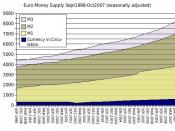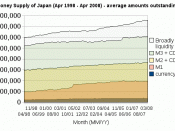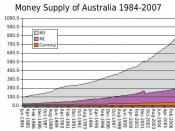This essay is also available on my site at http://www.geocities.com/rodentratman/index.html for non-super-users - it has diagrams and a full table.
East Asia's attraction to foreign savers was a direct result of genuine growth in that region. This required productive investment in the construction of physical and human capital to increase the future productivity of workers. In turn, workers engaged in capital construction required food, clothing and shelter etc. (consumption), which was generally provided by the savings of other people. Because human capital are qualities such as education and knowledge, only physical capital contributes to the genuine growth of GDP per capita also seen as living standards.
To understand why there is so much attraction to foreign savers, we need to see what the region in question can offer investors. Investors have a choice of how to finance their investment: using their own saving from wages/salaries, from business profit, or by borrowing or 'drawing' on the saving of other persons.
Although using personal saving or business profit for investment may be simpler, it is not always the most cost-effective since the priority of nearly all firms is to profit maximize. In order to do so, drawing on the savings of others allows access to a greater pool of saving and rate of investment, despite the downside regulations to protect the interests of savers and dependence on a continued flow of other persons' savings.
In the case of East Asian economies, decades of uninterrupted growth in living standards were partly based on high domestic saving (what is left after consumption spending on living expenses). In comparison, foreign investors' living standards were higher and so an investing economy (such as the US) would likely choose to supplement its domestic saving with foreign saving. Foreign saving is made through the current account of the...



*skim through
Quote your source on the essay.
10 out of 11 people found this comment useful.